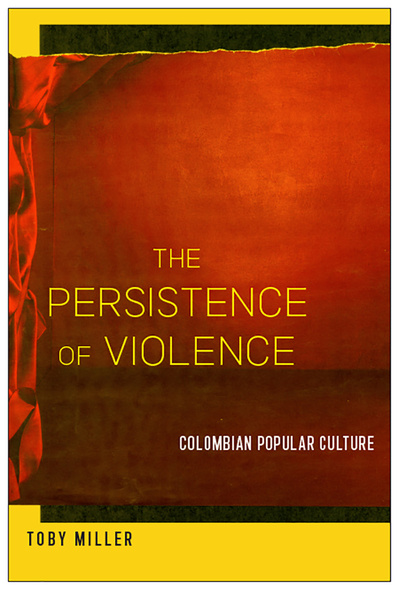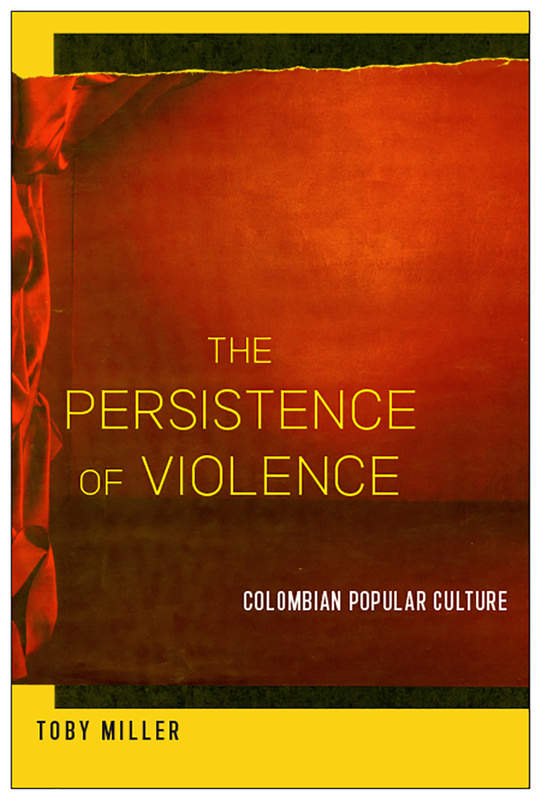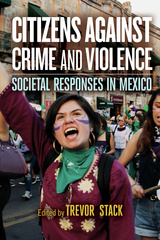
232 pages, 6 x 9
14 b&w images, 7 tables
Paperback
Release Date:17 Jul 2020
ISBN:9781978817517
Hardcover
Release Date:17 Jul 2020
ISBN:9781978817524
Colombia’s headline story, about the peace process with guerrilla and its attendant controversies, does not consider the fundamental contradiction of a nation that spans generosity and violence, warmth and hatred—products of its particular pattern of invasion, dispossession, and enslavement. The Persistence of Violence fills that gap in understanding. Colombia is a place that is two countries in one—the ideal and the real—summed up in the idiomatic expression, not unique to Colombia, but particularly popular there, "Hecha la ley, hecha la trampa" (When you pass a law, you create a loophole). Less cynically, and more poetically, the Nobel Laureate Gabriel García Márquez deemed Colombians capable of both the most noble acts and the most abject ones, in a world where it seems anyone might do anything, from the beautiful to the horrendous.The Persistence of Violence draws on those contradictions and paradoxes to look at how violence—and resistance to it—characterize Colombian popular culture, from football to soap opera to journalism to tourism to the environment.
Both eloquent and straightforward, Toby Miller artfully contextualizes violence in the culture of Colombia. The Persistence of Violence brings together the study of popular culture, political economy, and social movement issues in ways that offer a fresh view to scholarship of the region.
Toby Miller tackles the considerable task of analyzing the roots of violence in Colombia with acumen, attention to empirical research, and great sensibility to listen to Colombian actors themselves. The Persistence of Violence will remain an essential reference to Cultural Studies approaches to violence in Colombia and will be read with interest by the general public, students, and specialists alike.'
A welcome and timely contribution to the study of perhaps the most puzzling aspect of modern Colombia. Students of popular culture will find here much that is useful, especially as it pertains to recent developments such as the current Duque administration’s forays into economia naranja. Given the acuity of the analyses presented therein and their currency, Miller’s (and his co-authors’) work deserves ample circulation.
Both eloquent and straightforward, Toby Miller artfully contextualizes violence in the culture of Colombia. The Persistence of Violence brings together the study of popular culture, political economy, and social movement issues in ways that offer a fresh view to scholarship of the region.
Toby Miller tackles the considerable task of analyzing the roots of violence in Colombia with acumen, attention to empirical research, and great sensibility to listen to Colombian actors themselves. The Persistence of Violence will remain an essential reference to Cultural Studies approaches to violence in Colombia and will be read with interest by the general public, students, and specialists alike.'
A welcome and timely contribution to the study of perhaps the most puzzling aspect of modern Colombia. Students of popular culture will find here much that is useful, especially as it pertains to recent developments such as the current Duque administration’s forays into economia naranja. Given the acuity of the analyses presented therein and their currency, Miller’s (and his co-authors’) work deserves ample circulation.
TOBY MILLER is Stuart Hall Professor of Cultural Studies, Universidad Autónoma de México—Cuajimalpa. The author and editor of over forty books, his most recent volumes are El trabajo cultural, Greenwashing Culture, Greenwashing Sport, and The Routledge Handbook of Global Cultural Policy.
List of Figures
Introduction: The Persistence of Violence
Chapter One: The Absence and Presence of State Militarism: Violence, Football, Narcos (with Alfredo Sabbagh Fajardo)
Chapter Two: Industry Policy and Sex Tourism Meet the Case of the Destroyed Plaque (with Olga Lucia Sorzano and Anamaria Tamayo Duque)
Chapter Three: ‘I Myself Had to Remain Silent When They Threatened My Children’: Colombian Journalists and Self-Censorship Meet Prime-Time Narcos (with Marta Milena Barrios and Jesús Arroyave Cabrera)
Chapter Four: Green Passion Afloat: The Magdalena River (with Marta Milena Barrios)
Conclusion
Acknowledgments
Bibliography
Introduction: The Persistence of Violence
Chapter One: The Absence and Presence of State Militarism: Violence, Football, Narcos (with Alfredo Sabbagh Fajardo)
Chapter Two: Industry Policy and Sex Tourism Meet the Case of the Destroyed Plaque (with Olga Lucia Sorzano and Anamaria Tamayo Duque)
Chapter Three: ‘I Myself Had to Remain Silent When They Threatened My Children’: Colombian Journalists and Self-Censorship Meet Prime-Time Narcos (with Marta Milena Barrios and Jesús Arroyave Cabrera)
Chapter Four: Green Passion Afloat: The Magdalena River (with Marta Milena Barrios)
Conclusion
Acknowledgments
Bibliography






